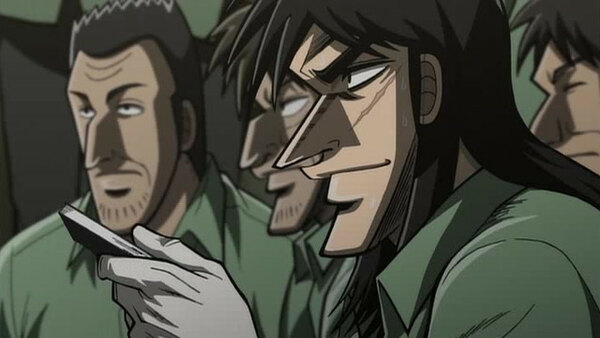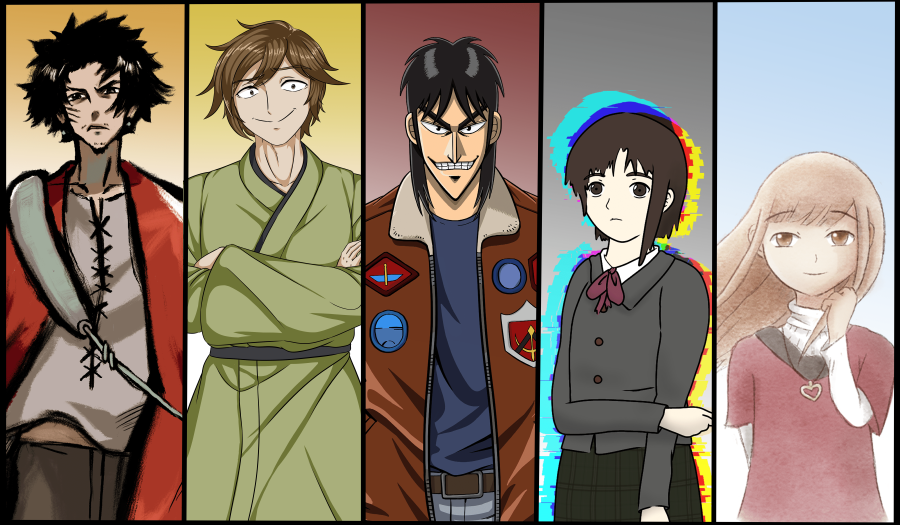Arts and Entertainment writer Justin Cho shares some anime favorites that are aimed at an older audience.
The other day I asked my little brother what anime he’s heard of. He knows nothing about anime, but he was still able to name popular shows like “Naruto,” “My Hero Academia,” and “Death Note.” These, as well as many other massively popular shows this decade, have something in common: they’re categorized as Shounen, a genre targeted towards a young demographic. Our cultural perception of anime is composed largely of the latest hot Shounen shows and Studio Ghibli films, and while there is absolutely nothing wrong with this style of entertainment, it may alienate viewers that are looking for something else. In order to expose sides of the medium that aren’t largely explored by the mainstream, here is a list of anime that are aimed at an older audience, whether it be through subject matter, presentation, or nuance of ideas.
“Shouwa Genroku Rakugo Shinjuu” (Studio Deen, 2016)

Rakugo is a traditional form of Japanese storytelling in which a single performer — referred to as a rakugoka — recites a narrative using only a fan and towel as props. It is up to the rakugoka to act as every single character by themselves, using only inflection in voice and body language to differentiate characters for the audience. It is a time-honored art where clarity, attention to detail, and personal flair separates the good from the great. “Shouwa Genroku Rakugo Shinjuu” is about the old, unrepresented world of rakugo.
The show begins by following a criminal who has just been let out of prison. Straight out of bars, this man wishes to leave the life of crime and become a rakugoka, so he goes straight to Yakumo Yuurakutei, a master of rakugo who had inspired the criminal in jail. Yakumo decides to take on the man and gives him the new name Yotaro. The show is about both Yotaro’s journey learning rakugo, and Yakumo’s past struggles in WWII and his own love of rakugo. The show deals with talent, sacrifice, empathy, and the wish to hold onto an old, dying artform. It’s a shame that many people are turned away from this show simply because they don’t know anything about this old, Asian form of storytelling. Most come in knowing nothing and come out entranced by the nuanced characters, smart writing, and cinematic directing. Despite the show’s relatively low popularity in the West, it has received overwhelming positive feedback from fans and critics alike. The show’s second season is currently the 26th highest rated anime on MyAnimeList and was around 16th right after it aired. At the risk of sounding pretentious, what strikes me most about the show is how incredibly mature the atmosphere feels. Everything from the shot composition, dialog, soundtrack, and artstyle feels very intentional. It pains me to see how many people skip over this beautifully crafted show, and I urge anybody, even those who hate anime, to check this one out.
“Wandering Son (Hourou Musuko)” (Studio AIC Classic, 2011)

This 2011 adaptation of Takako Shimamura’s popular Seinen manga follows transexual middle schooler Shuuichi Nitori who was born biologically male. Nitori fortunately has a group of friends who understand her, especially Yoshino Takatsuki, a friend who was born female but also does not identify with her assigned sex. Together, these friends grow as they enter puberty, deal with love and friendship, and explore their gender identity. Utilizing a light, watercolor-like artstyle, this adorable slice-of-life drama explores sides of the LGBTQ discussion that aren’t very common in anime. While the story does contain some juvenile drama, the mature, largely underrepresented ideas in this show make it deserving of exposure in my eyes and lands it a spot in this list.
“Samurai Champloo” (Studio Manglobe, 2005)

“Samurai Champloo” is a brilliant blend of samurais, hip hop, and counter-cultural ideas. The debut work of Studio Manglobe and the second series directed by Shinichiro Watanabe, creator of the 1998 masterpiece “Cowboy Bebop,” “Samurai Champloo” follows Mugen, Jin, and Kasumi’s journey through Edo period Japan. Music is the beating heart of this show; the striking Western and Eastern fusion aesthetic pairs perfectly with the show’s amazing hip hop inspired soundtrack, and even the story arcs are designed to resemble a double LP vinyl record. The show’s soundtrack and musical motifs are a large part of why this show is still loved by many, and they were made possible with the help of Nujabes. Nujabes is a Japanese hip-hop legend who is famous for pioneering the popular LoFi hip hop genre that many still use to study and simp to today. Samurai Champloo is still largely associated with LoFi, and it’s why the genre is still often associated with anime imagery, like in the famous 24 hour YouTube LoFi stream. The show’s hip hop background has made it immensely popular in the West as well, making contributions to our hip hop culture and even inspiring many Western pieces such as the 2005 cartoon, “The Boondocks.” “Samurai Champloo” is a must watch if you’re a fan of anime or LoFi hip-hop.
“Serial Experiments Lain” (Studio Triangle Staff, 1998)

“Serial Experiments Lain” is a cult classic anime from 1998 that was the brainchild of producer Yasuyuki Ueda, director Ryuutaro Nakamura, writer Chiaki Konaka — who is one of my personal favorite writers — and character designer Yoshitoshi Abe. The show is an allegory about the internet and how it will evolve. Some fascinating thoughts suggested include the idea that the internet will become not only a tool we use to communicate, but rather itself a layer of our reality: a layer that keeps everyone connected and a layer whose boundaries between it and “reality” will become vague. Those who we’re friends with online will eventually become indistinguishable from those we know in person. The show was very much ahead of its time, having a solid vision of the internet as far back as 1998. Despite its age, the piece is constantly revisited and studied, as many of its thoughts were very indicative of how the internet has developed to this day and may develop into the future. The themes and messages are also kept fascinating by the show’s abstract style signature of writer Chiaki Konaka. “Show don’t tell” is a philosophy you could use to describe the show’s presentation, as there is barely any dialog and the show presents many of its messages through abstract imagery and tone, sometimes to the point where certain scenes are completely incomprehensible without the subtext. If you watch this show with your brain off on a Friday night to relax, you may find yourself having no clue as to what’s going on, but if you’re into symbolic art pieces that people have written novel-length analysis pieces on, this show is for you.
“Kaiji” (Studio Madhouse, 2011)

Produced by Studio Madhouse in 2007 during the studio’s golden age before Masao Maruyama left, the show follows Ito Kaiji, a gambling addict who finds himself unemployed and stuck with a life that has hit rock bottom. After receiving an exorbitant debt from his old coworker, Kaiji is tricked into entering the brutal world of illegal underground gambling. Original manga author Nobuyuki Fukumoto has a way of coming up with the most wild, creative gambling scenarios that force his desperate, deranged, and horridly unlikeable characters to their psychological limit. The TV series makes amazing use of the blueprints that the manga left behind, cranking up the intensity and atmosphere with its shot composition, soundtrack, and unmistakably unique artstyle. Every scene feels heavy and makes you feel like you’re burning calories by just watching them. Animation director Takuda Haruhito did an amazing job translating Fukumoto’s distinct visual style into animation, giving the world a gritty, aged look and adding thick outlines that further highlight the intense atmosphere. The visual aesthetic is one of the biggest turnoffs for many because it’s just so different, but after overcoming this, you can experience one of the most creative, engaging, and sometimes painfully intense experiences in anime.
Images courtesy of Youtube, Anime B&B-Wordpress.com, IMDb, Frameland, simkl.com
Art by Angela Liang, Alex Liang, Allyson Llacuna, Yui Kita, Susan Sun for the UCSD Guardian.














